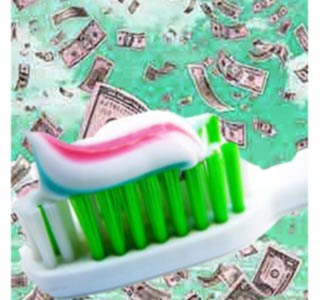Ever thought of people who cannot even afford to buy toothpaste and live such a hard luck of not brushing teeth with toothpaste. According to study published in the BioMed Central’s open access journal Globalization and Health it has been found that fluoride toothpaste prices have raised and have become too expensive for the world’s poorest people.
The research team included researchers Ann Goldman of the School of Public Health and Health Services at the George Washington University in Washington D.C., Robert Yee and Christopher Holmgren of the World Health Organization Collaborating Centre at Radboud University Medical Centre in Nijmegen, The Netherlands, and Habib Benzian of the FDI World Dental Federation who together compared the average purchasing capacity of fluoride toothpaste in 48 countries.
Globalization, privatization and commercialization are to be blamed entirely as people have adopted to eat a more of westernized diet, which contains greater amount of carbohydrates and refined sugars. This eating behavior has given a rise in tooth decaying problems in most of the developing countries. And thus it results into malnutrition and live low quality of life.
“Because of the importance of fluoride toothpaste in preventing tooth decay, it must be made more available to the world’s poorest populations,” commented Goldman, “steps should be taken to make fluoride toothpaste more affordable and more accessible.” The authors suggest that this can be done by exempting fluoride toothpaste from taxation, encouraging the local manufacture of fluoride toothpaste and persuading multinational manufacturers to implement different pricing policies for poorer countries.
As fluoride toothpaste is primarily used worldwide for prevention of dental decay, but through the recent statistics only 12.5 % of the world benefits from it. The study researchers assume that the reduction in the usage of fluoride toothpaste is because of its price, and is also high in some parts of the world. This kind of enumeration is done for the first time to check the affordability of toothpaste all over the world.
The Questionnaire about the cost of fluoride toothpaste was filled by dental associations, non-government oral health organizations and individuals around the world. The price of the toothpaste was counted for a single person for the whole year and considering the other household expenditures with the number of days required to work to recover the cost of the toothpaste.
The results displayed that in different income groups in various countries, as the per capita income decreased, the proportion of income needed to purchase a year’s supply of toothpaste increased; the poorest in each country faced the hardest hit.

